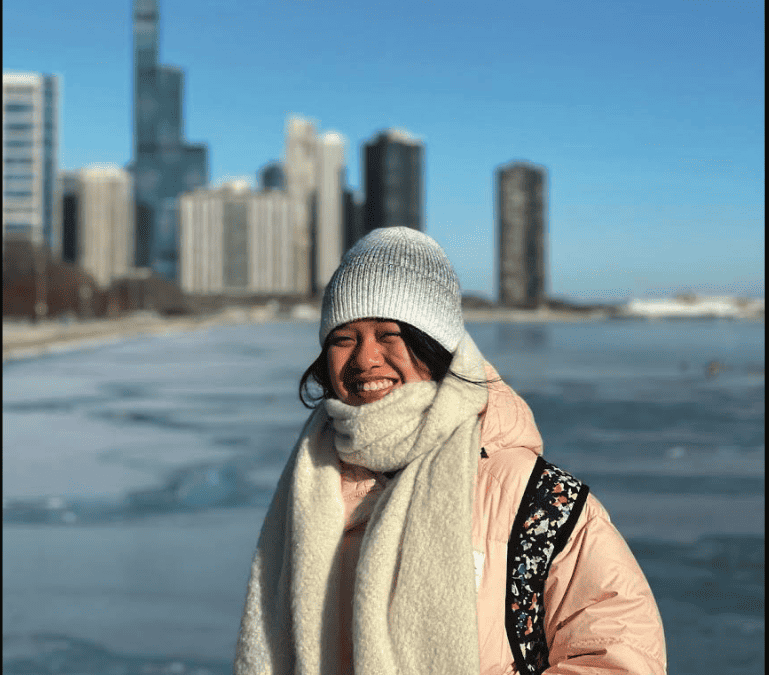Pol Le | Staff Writer
Pol Le ‘25 is an economics and journalism major from Vietnam.
Unless one intentionally seeks out the staircase leading to Denison Museum, they might overlook the exquisite art exhibitions located on the first floor of the Michael D. Eisner Center for the Performing Arts. Currently, the museum features an exhibition titled “Shift: Adapting with Change and Resilience.” It brings together the works of three international artists: Mulyana, Zinaida, and Shinji Turner- Yamamoto.
The museum is a mere three-minute walk from my residence hall. Every day I walk by the museum by entering Eisner through a discreet side door to get to class. Every day I observe the exhibition from the glass wall, marveling at the knitted statues of the grassy, oceanic figures. Every day I wonder why there is hardly anybody visiting this space beyond the student receptionist.
“We had faculty from all across campus coming to sit at a table,” said Megan Hancock, the museum’s director and curator. “We talked about urban change, political change, economic change, climate change, all the changes. Out of that conversation, there was also this notion that they really wanted to talk about resiliency.”
She directed me to one of the installations by Mulyana from Indonesia. It is called IMAGO. It is reminiscent of the blue ocean and coral reefs. Diving deeper into the installation, I saw the gradual bleaching of the corals. This symbolizes the dire consequences of human damage on the natural world. We walked to Ukrainian artist, Zinaida’s, short film project called “The Rooted 2.0.” Her documentary researched the lives of the Polishchuks, an ethnic group residing within the Chornobyl Exclusion Zone. This project delves into the resilient spirit of a community facing immense challenges. As if their lives weren’t complicated enough, the outbreak of war in 2022 further intensifies their predicament. Through “Rooted 2.0,” I got a glimpse into the identities and histories of those individuals who persisted with their motherland.
The last part of the exhibition is about Shunju, known as “NATURALIA/ARTIFICIALIA.” His pieces contain fragments of natural elements, including 100-million-year-old fossils, and minerals.
“His works very different, very quiet,” Hancock said. “But this is why I love his work, because it is quiet. It makes me want to come and just think for a minute. Meditate on it.”
It is fascinating to learn about the artistic creativity and hands-on experience that Denison Museum offers. However, a lot of the time, Denison students are not taking advantage of this rich opportunity. Being a college student is busy. Not everyone can take the time to learn about the connection between the three artists as a representation of the concept of resilience and change.
I blame this, in part, on the museum’s location. It’s so far away from A quad, and remains hard to find without any signs in Eisner.
Visiting the museum exhibition is a cherished opportunity to slow down time and try to understand the work of multiple artists, in which you lose yourself to connect with the artists’ and creators’ legacy. Denison Museum was created to nurture and enrich that experience.
I encourage you to set aside just 15 minutes
to visit the Denison Museum one day. It will be
worth the time.

